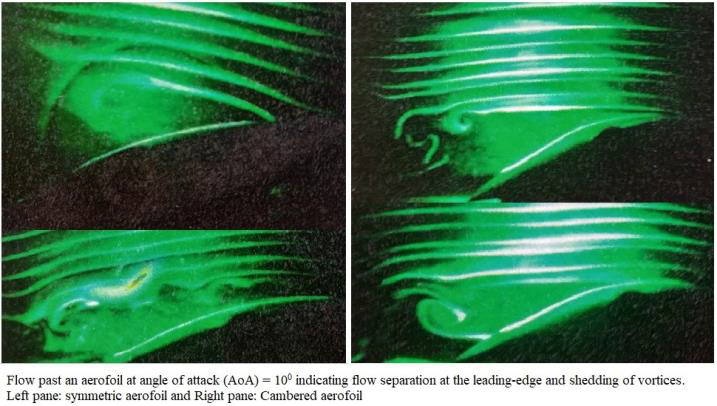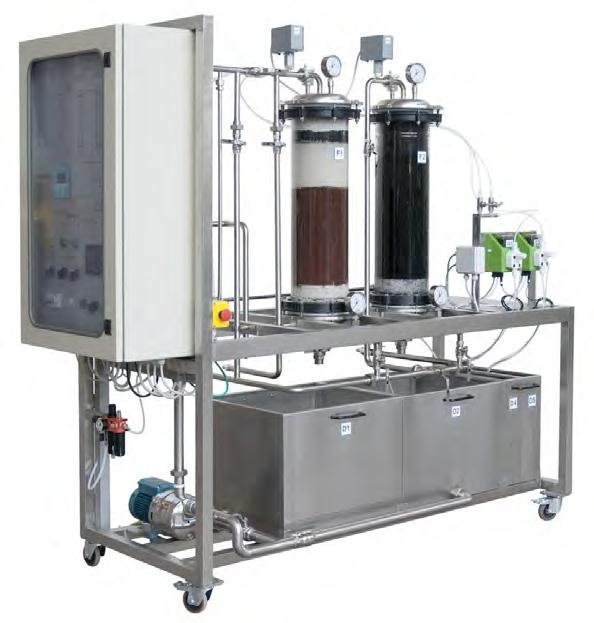Supersonic Wind Tunnel Model AT 012
Sci-tech Supersonic Wind Tunnel Model AT 012 is a test bed for examining the fluid mechanics and associated fluid phenomena for air travelling faster than the speed of sound. The supersonic wind tunnel is open type wind tunnel working continuously; a variable speed fan is used to draw through the wind tunnel. It draws air from the atmosphere & is after flowing through the wind tunnel the air is discharged back to the atmosphere. In order to increase the speed of air to supersonic conditions, the air is accelerated through a converging-diverging nozzle. In the measurement section, the air is accelerated further and flows around a drag. The air the flows through the diffuser where it is decelerated before entering the air blower. Interchangeable test sections are provided to generate different velocities (Mach 1.4 & Mach 1.8). The trainer supplied with four different test models (Wedge, Double wedge, Rocket, Bullet) For observation of the supersonic flow and the resulting shock fronts, the Schlieren optics system is supplied. Pressure sensors are used to measure pressure distribution, & transmitted directly to an integrated computer using a USB based Sci-CalR Data Acquisition System for analysis using the software.
Features
- Velocity Range: Subsonic through Mach 1.8 with help of interchangeable Test Section.
- Continuous Operation using Variable Speed Air Blower, working on Vacuum Principle.
- Compressed air collecting tank & air dryer not required (Compared to Intermittent Type Supersonic Wind Tunnel).
- Schlieren Apparatus with accessories for visualization of Flow at supersonic velocities.
- Data Acquisition System for measurement & analysis of test parameters
- Different test models available for study of flow patterns.
Sci-tech Supersonic Wind Tunnel Model AT 012 is a test bed for examining the fluid mechanics and associated fluid phenomena for air travelling faster than the speed of sound. The supersonic wind tunnel is open type wind tunnel working continuously; a variable speed fan is used to draw through the wind tunnel. It draws air from the atmosphere & is after flowing through the wind tunnel the air is discharged back to the atmosphere. In order to increase the speed of air to supersonic conditions, the air is accelerated through a converging-diverging nozzle. In the measurement section, the air is accelerated further and flows around a drag. The air the flows through the diffuser where it is decelerated before entering the air blower. Interchangeable test sections are provided to generate different velocities (Mach 1.4 & Mach 1.8). The trainer supplied with four different test models (Wedge, Double wedge, Rocket, Bullet) For observation of the supersonic flow and the resulting shock fronts, the Schlieren optics system is supplied. Pressure sensors are used to measure pressure distribution, & transmitted directly to an integrated computer using a USB based Sci-CalR Data Acquisition System for analysis using the software
Specifications
- Investigation of pressure curves in supersonic flow
- Visualization of Mach lines and shock waves using Schlieren optics
- Continuously operating, open supersonic wind tunnel, low pressure principle
- Positive displacement fan with variable speed
- Interchangeable walls in the measuring section produce velocities up to Mach 1,8
- Drag bodies: rocket, projectile, double wedge and wedge
- Manometer for displaying the pressure in the measurement point
- Sci-CalR software for data acquisition via USB under Windows 8.1, 10
Technical Specifications
- Type: Continuous Operating, Induced Flow Supersonic Wind Tunnel
- Blower:
- Positive displacement blower
- Variable Frequency Drive for control of Blower speed
- Silencer for noise reduction
- Area of Test section: 100 x 25mm
- Test models:
- Wedge
- Double wedge
- Rocket
- Bullet
(Other Test Models available on request)
- Schlieren Apparatus: Consisting of
- Halogen lamp
- Adjustable parabolic mirrors
- Screen for Schlieren optics
- Image Recorder
- Interchangeable test sections: Three test sections with different Mach Number:
- Subsonic
- Mach 1.4
- Mach 1.8
(Other test sections with different Mach Number available on request) Options:
- Data Acquisition System:
Sci-CalR Computer Control Software & Interface Sci-CalR software & hardware has been designed for use with more than 600 ‘Sci-tech’ trainers. Sci-CalR comes in a module that can be fitted or mounted on the Sci-tech trainers very easily. Sci-CalR box has 11 inches front HMI interactive panel, inside are i3 processor computer with it’s own hard drive & software processor with 16 to 32 analog and 16 to 32 digital signal data-loggers. The ‘LabVIEW’ processes the input signal with in-built data and formulae to tabulate results for the Sci-tech trainers. Sci-CalR box has HDMI output for connection to a projector or an electronic whiteboard or a monitor. Sci-CalR box has input ports for inputs from the Sci-tech trainer sensors. Sci-CalR eliminates requirement of external computer.
- Overall Dimensions: 4 m x 1 m x 1.7 m (H)
- Gross Weight: 350 Kg (Approx.)
- Recommended Operating conditions: 40% rel. humidity at 25°C
Experiments
- Pressure curves in supersonic nozzles (Laval nozzle)
- Pressure curves and losses in tunnel flows with Mach >1
- Determining the Mach number from the angle of the shock waves
- Comparison of theory and experiment
- Pressure distribution along a convergent-divergent nozzle
- Pressure distribution and pressure loss in channel flow at high Ma number
- Observation of flow patterns around the bodies at supersonic flows.
- Observation of shock waves at supersonic flow using Schlieren optics
Required Services
- Electric Supply 440 V AC, Three Phase, 50 Hz.
- Floor Space: 6 m x 3 m
- Computer / Laptop: Intel i3 / i5 Processor, 4 GB RAM, 10 GB Free Free disc, Working USB Port, Windows 7/10 Operating System (Only for Data Acquisition System)





















